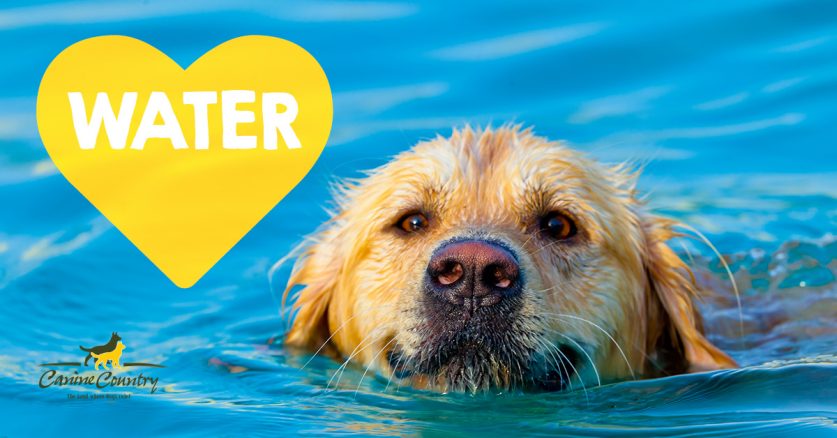
Dogs That Don’t and Do Love To Swim
Posted Jun 15, 2018 in Fun Dog Stuff
With the hot summer heat upon us, finding new conventional ways to keep our dogs cool but also in shape has become a new project. Upon searching the internet or asking other dog owners you may think taking your dog on a swim is a good alternative. But is that the best option for every canine? It may come as a surprise but not all dogs love to swim. In fact, some either don’t know how or find it to be extremely difficult.
Which Dogs Can’t Swim and Why?
There can be multiple reasons for why some dogs aren’t able to swim. But there are two main characteristics that you’ll find in specific breeds that may not find a dip in the pool to be as delighting as you do.
Brachycephalic Dogs
Brachycephaly is a condition found in dog breeds with shorter snouts and flatter faces. Swimming is made difficult for these pups because its harder to keep their heads above water. They have to tilt their heads so far upward it can put them in a vertical position, causing them to sink. A few breeds with this condition include:
- Boxers
- Pugs
- Boston Terriers
- Chihuahuas
- Bulldogs
- Shih Tzus
Dogs with Heavier or Larger Heads
Certain breeds are made with disproportionately larger and/or heavier heads. Because of this disparity, they naturally tip forward in the water making swimming a challenge. You’ll find that a lot of dogs who may fall under the previous list could also qualify for this one. As well as some of the breeds in this category could qualify for the one above.
- Basset Hounds
- English Bulldogs
- Great Danes
- Mastiffs
Now even though dogs like these may not have been made for water, it doesn’t mean they can’t enjoy it. You can start off by introducing them to a shallow area they can comfortably stand in. Then when you think they’re ready, consider getting them a life jacket. Or even helping them float by holding up their mid-section yourself.
Which Dogs Are Your Natural Born Swimmers?
Just like some breeds aren’t naturally made for the water, some excel in it. Once again their anatomy is the biggest factor in their impressive aquatic abilities. Some even have water-related names that correspond with their amphibious skills.
Hunting Dogs
Many dogs are known for their hunting backgrounds. Some were bred to retrieve animals from the water, alert their owners of nearby prey, or even do the hunting themselves. Here are some well-known hunting breeds whose anatomy assisted in their water activities:
- Retrievers
- Setters
- Water spaniels
- Barbets
- Spanish Water Dogs
Helping Dogs
Some breeds were raised near the water. This has helped in times where dogs were needed on boats to keep rid of pests. But also is helping us now by creating amazing rescue dogs who save hundreds of people from drowning each year.
- Newfoundlands
- Portuguese Water Dogs
- Schipperkes
- Poodles
So before you go jumping in the pool with your pooch, make sure you know their breed’s abilities. And if you do happen to own a dog who doesn’t have a good history with bodies of water. Aiding them in their swimming activities is a great bonding exercise to bring you and your pup closer.